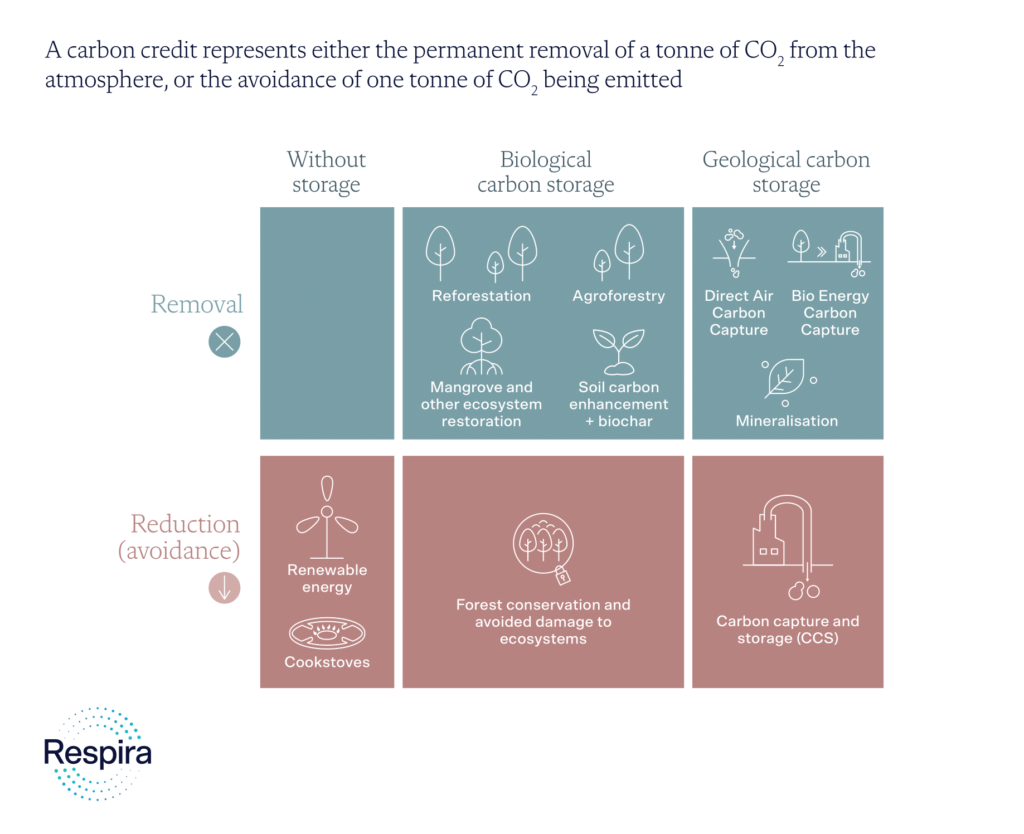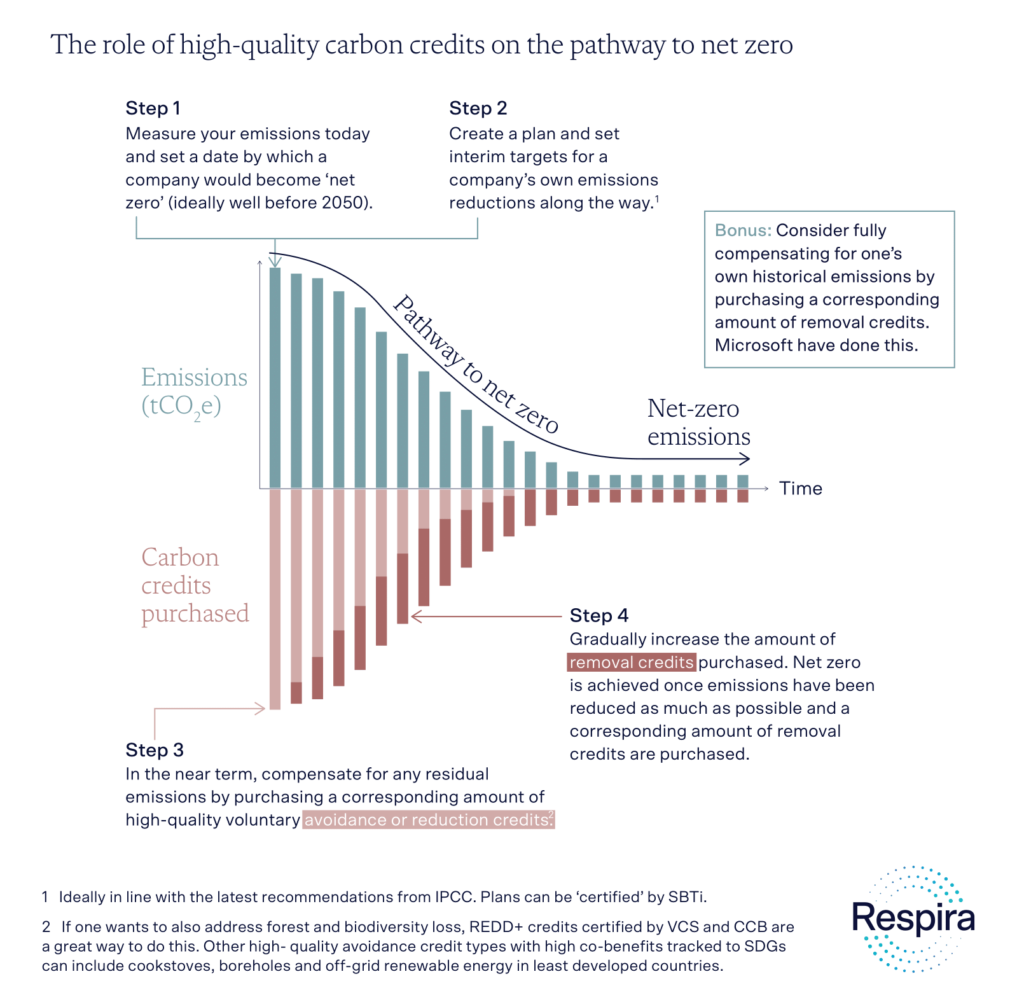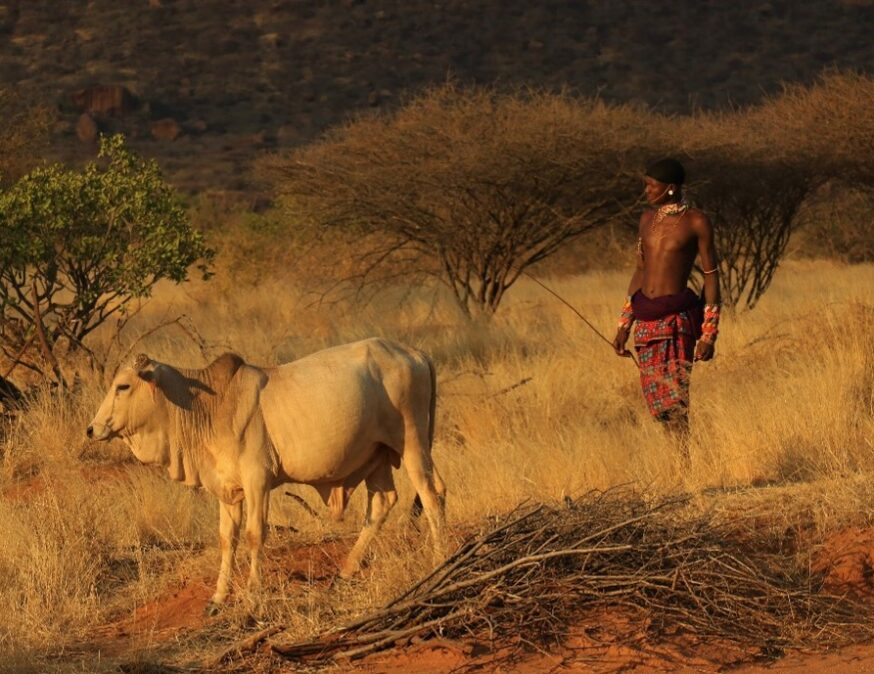How can you tell what a “good” carbon credit is in the voluntary carbon market? The three things any buyer should be looking for: climate integrity, social integrity and biodiversity integrity
If you are considering buying voluntary carbon credits, you’ll likely have come across some criticism of these instruments and the markets they are traded in. We believe if you invest in high-quality “good” carbon credits, not only can you help meet your company’s climate goals, but you also help channel money into projects that have hugely positive impacts for local communities and biodiversity.
A carbon credit is simply a certified transferrable instrument to represent an emission reduction of one metric tonne of CO2 (or an equivalent amount of other GHGs). These reductions in CO2 can either come from activities which avoid emissions (for example conserving forest which would otherwise have been destroyed or installing renewable energy to replace the use of fossil fuels) or activities which sequester (remove) carbon (for example planting new trees or land restoration) from the atmosphere.

Most carbon credits are used by corporates or other institutions to compensate for hard-to-abate emissions in their value chain. The effectiveness of this approach depends on each carbon credit genuinely representing a reduction of GHG emissions.
To assess good carbon credits, we are really checking for three things: climate integrity, social integrity and biodiversity integrity.
1. Climate integrity (carbon credits must deliver genuine emissions reductions so should be verified, additional and permanent)
Verified means that the emissions reduction must be accurately measured (by an independent third-party) and verified. The formal structures and standards used (e.g. Verified Carbon Standard and Gold Standard) include scientific methodologies, accurate surveillance and regular verification creating confidence and credibility for buyers.
Additional means ensuring that the underlying activity which produced the carbon credit (be it conserving forest or building solar plants) would not have taken place without carbon revenue. In other words, they can’t be generated by business-as-usual activities. If carbon credits are not additional then when a company retires carbon credits to use towards its own targets, the emissions reductions would have occurred anyway. With additionality we are making sure that on a net emissions basis the world is better off.
Finally, permanent simply means ensuring the reduction in emissions is permanent and not likely to be reversed. This is important because we know the effects of GHG emissions are very long-lived. We must be confident that a carbon credit represents an emission reduction which is (as far as possible) equally long-lasting. Nature-based projects clearly have higher permanence risks than some technology projects because protected or newly planted trees can be destroyed by natural (or man-made) disasters.
2. Social integrity
The UN SDGs provide excellent guidance for setting and meeting targets that fulfil social and community obligations. In addition to this, high-quality carbon projects will ensure equitable revenue sharing with the communities they work with, and respect or indeed establish indigenous land rights.
3. Biodiversity integrity
We cannot solve climate change without protecting important biodiversity around the globe. High-quality projects target outcomes in which any impacts on biodiversity (i.e. the variety of ecosystems and living things) are positive or at least not negative, and action is taken to avoid and reduce such impacts and rehabilitate affected species or landscapes.
How projects address all of these issues is documented and monitored in painstaking detail on independent registries such as Verra who provide the certification for the nature-based projects in our portfolio. In addition to the Verified Carbon Standard which certifies the carbon calculations, our projects also qualify under the CCB standard which certifies outstanding community and biodiversity outcomes. If you haven’t seen what this documentation looks like then have a look at an example for the Ntakata project in our portfolio.
At Respira, we think integrity of supply is so important that we do additional due diligence on each element for each carbon project we support, identifying and investing in the highest quality projects. We do this not because we do not have enormous respect for the carbon standards, but because we think the biggest risk to the sector and our clients is reputational. If we can drive carbon credit quality even higher by only supporting projects which produce best-in-class carbon credits then we are not only delivering for our clients and investors but also for the industry and the planet.
Of course, high quality supply needs to go hand-in-hand with high integrity demand for the sector to thrive. Corporate buyers need to have credible net zero strategies and prioritise cutting emissions in their own value chains first. Carbon credits can be used to compensate for residual emissions whilst companies are decarbonising.

Picture credit: RSPB, Gola Rainforest Conservation
Share this article



